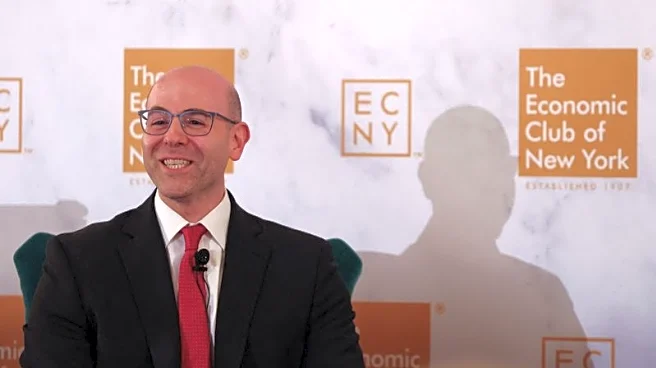What is the story about?
What's Happening?
The Federal Reserve is grappling with persistent inflation that has not returned to pre-pandemic levels, despite efforts to stabilize the economy. The central bank recently cut interest rates by a quarter point to support the labor market, which is experiencing a slowdown in hiring. Inflation remains a significant concern, exacerbated by President Trump's trade policies, which have increased prices. The Fed's dual mandate of controlling inflation and maintaining maximum employment is under strain, with policymakers divided on the best course of action. Some Fed officials, particularly those appointed by Trump, are optimistic that the inflationary impact of tariffs will be temporary, while others remain skeptical. The Fed has kept interest rates steady for nine months to assess the economic impact of these tariffs.
Why It's Important?
The ongoing inflation issue is critical as it affects the cost of living for lower- and middle-income households in the U.S. The Fed's actions, including potential further rate cuts, aim to prevent a rise in unemployment and alleviate financial pressures on Americans. However, the economic landscape is complicated by factors such as Trump's trade war, mass deportations, and federal funding cuts, which have disrupted business operations and hiring plans. The Fed's ability to respond effectively is further hindered by a government shutdown that has delayed the release of crucial economic data. This situation creates uncertainty for policymakers and the public, as they await signs of economic stabilization.
What's Next?
The Federal Reserve is expected to lower interest rates again by the end of the year to support the economy. However, the central bank faces challenges in maintaining its independence amid political pressures from President Trump, who has expressed intentions to influence Fed leadership and policy decisions. The upcoming policy meeting on October 28-29 will be closely watched for any changes in interest rates. Meanwhile, the economic outlook remains uncertain, with potential implications for employment, inflation, and overall economic growth.
Beyond the Headlines
The Fed's struggle to manage inflation and employment highlights broader issues of economic inequality and the impact of political decisions on financial stability. The divide between higher-income and lower-income consumers is widening, with the latter group facing more significant financial hardships. The Fed's efforts to balance its dual mandate are complicated by external pressures and the need to protect its independence. The situation underscores the importance of effective monetary policy in navigating complex economic challenges.
AI Generated Content
Do you find this article useful?














